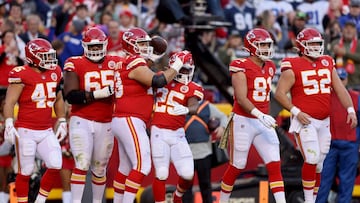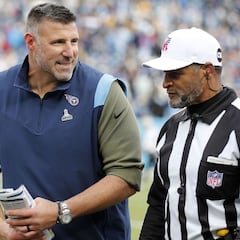NFL’s taunting penalty rules consistently inconsistent
The latest in confusing taunting calls came during the Chiefs vs Cowboys game when Edwards-Helaire pointed at a Cowboys player before scoring a touchdown.


There is obvious disrespect and uncalled-for behaviors, and then there is the NFL taunting penalty calls in the 2021 season.
Taunting penalty for pointing
You can’t blame the players if they’re feeling confused about what constitutes “taunting” and what doesn’t. In today’s Chiefs vs Cowboys game, for example, Clyde Edwards-Helaire was given the taunting penalty for pointing at Cowboys linebacker Luke Gifford. I mean, okay, no one likes to be pointed at, right? It’s just so accusing! Yeah, I am reaching.
Here is a look at the crime in question:
Clyde Edwards-Helaire was called for taunting because he pointed at #Cowboys LB Luke Gifford.
— Ari Meirov (@MySportsUpdate) November 21, 2021
Not sure how Gifford will recover from that. pic.twitter.com/80QCqNJg5b
Edwards-Helaire caught a pass from Mahomes and took it into the end zone for the Chiefs touchdown. He celebrated by pointing, which is really just cruel. Meanwhile, Cam Newton’s Superman celebration after scoring his second touchdown against the Washington Football Team was deemed perfectly fine.
Cam Newton scores, sprints to midfield, puts the ball on the Panthers logo and does the Superman 😤 pic.twitter.com/1Sh3rQ0I3F
— Will Brinson (@WillBrinson) November 21, 2021
So to reiterate, it is fine to pretend to rip your shirt off, but not okay to point. What about clapping, you ask? Not okay. Just ask Tashaun Gipson, who was given the taunting penalty for celebrating a third-down stop by clapping too close to Bengals receiver Ja’Marr Chase. Jump-kicks are not cool either. One of the more controversial taunting flags of the season came when Cassius Marsh did a jump-kick after sacking Ben Roethlisberger.
Well-intentioned but ill-explained rule
To be fair, the new taunting rule has good intentions. It just maybe needs to be defined a bit better and to be more consistent in its execution. This is the first year the NFL has had the taunting rule, so there’s a learning curve here. The whole point of the rule is to penalize actions that could lead to conflict amongst players. They are not trying to be “lame” or prohibit any excitement or emotions with this rule. The NFL emphasizes that the reactions must not be directed towards opponents. It seems like as long as the reaction is not blatantly directed towards the opponent (I.e. clapping near their face, pointing) then all is okay (Superman pose in general direction of fans).
On that note, there was another taunting penalty during the Cowboys and Chiefs game that is getting less attention but was perhaps more appropriate. Still, it doesn’t follow that general rule of being directed towards the opponent. In a scuffle between Cowboys C.J. Goodwin and Chiefs Rashad Fanton, Goodwin grabbed Fanton by the helmet and a flag was thrown, which the players, announcers, and likely most fans assumed was on Goodwin for the facemask. But the flag was actually on Fanton for Unsportsmanlike Conduct after the fact. What he did was pretend to be shooting a gun towards the sidelines, a gesture with a bit more violent implications than pointing at another player.
Even if it was warranted, it was strange the facemask penalty was not initially called, as it’s seemingly what started the fight to begin with. The refs did eventually call it, but not until after the video replay. The penalties were offset.
Though well-intentioned, there have already been several examples of confusing calls in addition to the ones mentioned. Some examples of ridiculous taunting calls so far:
• Cassius Marsh made a “posture” towards the Steelers sideline
• Mike Edwards backpedaling the 5 yards into the end zone after a pick six
Related stories
• Darren Waller bounced the football on the sideline after a 21-yard reception (losing 15 of those to the penalty)
In the NFL rulebook, it states that a flag will be thrown for taunting when there is “the use of baiting or taunting acts or words that engender ill will between teams.” It is a 15-yard penalty from the spot where the transgression happened or in which the referees deem appropriate. If it is called on the defense, it’s an automatic first down.

